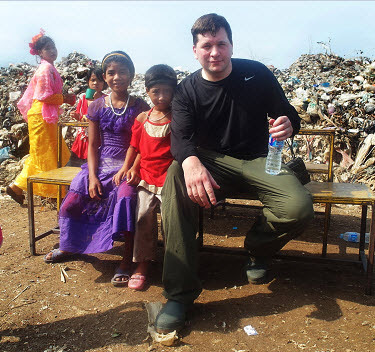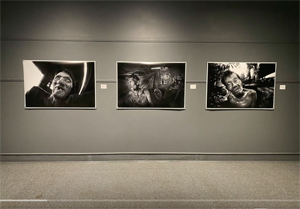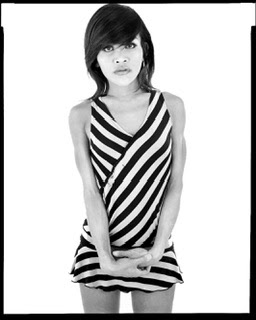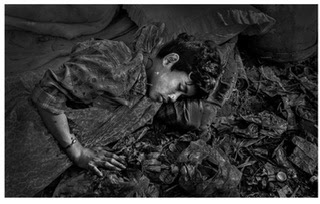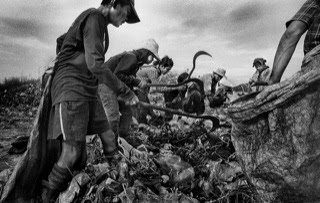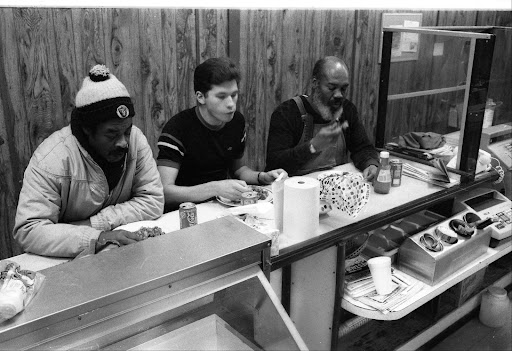I have been communicating with numerous people (probably more than 15) on the free Large Format Photography site.
http://www.largeformatphotography.info/forum/
I have been learning lots of things from many experienced Large Format folk. The people on the site helped link me to both ULF lens I bought recently, the 180cm F 15 Brass Zeiss Tessar and the recent 1780mm Nikkor Apo F14.
Here is an exchange with a large format forum member and fellow wet plater G-------.
-----------------------------------------------------------------------------------------------------------------------
G---------- WROTE:
I've found it's sometimes easier to get super rare lenses because there is little knowledge of them so low demand. When everyone was chasing Pinkham and Smiths, I looked for other, more uncommon soft focus lenses. Same with Petzvals, when everyone chased Dallmeyers B models, I just found the others that were just as good. I suppose enough people need Ultra Long lenses that those do have demand, otherwise they would be quite cheap.
Quinn is great, he basically started the wetplate craze in Europe that we are now seeing grow and grow. Kind of like Coffer started it in America about 5 years before that. I helped Quinn one year shoot wetplate at a French photo fair. He was quite a wetplate celebrity and the booth we ran had a line of people wanting their plates made, all weekend.
It takes a while to get good results with wetplate, but it goes faster if you learn, hands on, from a pro. Too many hacks try to impress by "the old fashioned" nature without any real skill in technique or composition or lighting. I've seen a lot of very poor novice wetplater work over the years, where the vision of "doing it the old way" cannot save what are very bad plates.
With your LF background you are many steps ahead of the casual person who decides to start doing wetplate, and tries to learn by just reading a few facebook groups. I saw you were also going to start on small plates, that's always a good plan. I shot half plates every day or two for about 6 months when I was learning, and never went to large plates until I could get a good result on a 4x5 size. Remember, 98% of the old Ambrotypes and Tintypes were quarterplate (3 1/4 X 4 1/4) or smaller, in the 1870s. Even Brady and Gardner shot fairly small plates, smaller than 8x10. Yet their quality is seldom met today. You can shoot a hundred smaller plates with the same amount of chemistry that will be exhausted by 10 Mammoths.
Luther Gerlach is another collodion artist that has done mammoth plates for a long time. You might want to connect with him too. An example:
My Reply to G-------------:
Thanks very much for the long, detailed and informative post G--------------. I have sent emails to most of the big wet plate boys asking for help, workshops etc., including Luther Gerlach. His 3 graces video was a major influence in me wanting to eventually go mammoth.
"doing it the old way" Yes I feel your right here. Many times the process seems to overcome the images. Who cares what techniques you use if the photos suck. It always has to be the images first, the methods used while important should be secondary. I often see wet plate guys, dressing up in costumes and speaking endlessly about Archer and all the tech steps, but then in the end making boring, rather meaningless images. I love the look of wet plate photos, especially the feel of 3D ambrotypes, but the work, the work I hope to do has to have more value than that. If I cannot make strong images regardless of the process, then why bother? Great art should move us on an instinctual personal level, the rest of the stuff, lens, cameras, process, method, arty farty talk is all window dressing. Put the image on the wall and let it SPEAK for itself, nothing else matters.
Beautiful image by Luther G....I would love to take a workshop with him also. Will try connecting with him again, the last time round I only got to an assistant who relayed me Luther's thoughts. His work like I said earlier was an inspiration. I hope to go to Northern Canada and do landscapes and sea/lake scapes of similar quality. There is such a timeless beauty to these type of works. I was hoping also to do major portrait work (maybe not with the 35x35 but with the 16x20 Chamonix), probably with a flash set up, not sure on that yet. Much of this projects ideas evolve and change on a daily basis.
I shot half plates every day or two for about 6 months when I was learning, and never went to large plates until I could get a good result on a 4x5 size. Remember, 98% of the old Ambrotypes and Tintypes were quarterplate (3 1/4 X 4 1/4) or smaller, in the 1870s. Even Brady and Gardner shot fairly small plates, smaller than 8x10. Yet their quality is seldom met today. You can shoot a hundred smaller plates with the same amount of chemistry that will be exhausted by 10 Mammoths.
This is very solid advice. When I took my one wet plate workshop (I also have an old Bostick and Sullivan kit) I was doing it on 4x5 plates. I have a number of blank black 4x5 and 8x10 plates in my darkroom. For the first 6 months, maybe a year I will concentrate on shooting that format size, before moving up. When you make mistakes, it is so much less painful when it costs less money! I plan on making LOTS AND LOTS of mistakes!!
Thanks so much for your email G-------------, I will post some work in the coming years. I hope you can help me become a better wetplater as I climb that steep hill.
http://www.largeformatphotography.info/forum/
I have been learning lots of things from many experienced Large Format folk. The people on the site helped link me to both ULF lens I bought recently, the 180cm F 15 Brass Zeiss Tessar and the recent 1780mm Nikkor Apo F14.
Here is an exchange with a large format forum member and fellow wet plater G-------.
-----------------------------------------------------------------------------------------------------------------------
G---------- WROTE:
I've found it's sometimes easier to get super rare lenses because there is little knowledge of them so low demand. When everyone was chasing Pinkham and Smiths, I looked for other, more uncommon soft focus lenses. Same with Petzvals, when everyone chased Dallmeyers B models, I just found the others that were just as good. I suppose enough people need Ultra Long lenses that those do have demand, otherwise they would be quite cheap.
Quinn is great, he basically started the wetplate craze in Europe that we are now seeing grow and grow. Kind of like Coffer started it in America about 5 years before that. I helped Quinn one year shoot wetplate at a French photo fair. He was quite a wetplate celebrity and the booth we ran had a line of people wanting their plates made, all weekend.
It takes a while to get good results with wetplate, but it goes faster if you learn, hands on, from a pro. Too many hacks try to impress by "the old fashioned" nature without any real skill in technique or composition or lighting. I've seen a lot of very poor novice wetplater work over the years, where the vision of "doing it the old way" cannot save what are very bad plates.
With your LF background you are many steps ahead of the casual person who decides to start doing wetplate, and tries to learn by just reading a few facebook groups. I saw you were also going to start on small plates, that's always a good plan. I shot half plates every day or two for about 6 months when I was learning, and never went to large plates until I could get a good result on a 4x5 size. Remember, 98% of the old Ambrotypes and Tintypes were quarterplate (3 1/4 X 4 1/4) or smaller, in the 1870s. Even Brady and Gardner shot fairly small plates, smaller than 8x10. Yet their quality is seldom met today. You can shoot a hundred smaller plates with the same amount of chemistry that will be exhausted by 10 Mammoths.
Luther Gerlach is another collodion artist that has done mammoth plates for a long time. You might want to connect with him too. An example:
 |
| Photograph by great mammoth wet plate phtoogher Luther Gerlach |
Thanks very much for the long, detailed and informative post G--------------. I have sent emails to most of the big wet plate boys asking for help, workshops etc., including Luther Gerlach. His 3 graces video was a major influence in me wanting to eventually go mammoth.
"doing it the old way" Yes I feel your right here. Many times the process seems to overcome the images. Who cares what techniques you use if the photos suck. It always has to be the images first, the methods used while important should be secondary. I often see wet plate guys, dressing up in costumes and speaking endlessly about Archer and all the tech steps, but then in the end making boring, rather meaningless images. I love the look of wet plate photos, especially the feel of 3D ambrotypes, but the work, the work I hope to do has to have more value than that. If I cannot make strong images regardless of the process, then why bother? Great art should move us on an instinctual personal level, the rest of the stuff, lens, cameras, process, method, arty farty talk is all window dressing. Put the image on the wall and let it SPEAK for itself, nothing else matters.
Beautiful image by Luther G....I would love to take a workshop with him also. Will try connecting with him again, the last time round I only got to an assistant who relayed me Luther's thoughts. His work like I said earlier was an inspiration. I hope to go to Northern Canada and do landscapes and sea/lake scapes of similar quality. There is such a timeless beauty to these type of works. I was hoping also to do major portrait work (maybe not with the 35x35 but with the 16x20 Chamonix), probably with a flash set up, not sure on that yet. Much of this projects ideas evolve and change on a daily basis.
I shot half plates every day or two for about 6 months when I was learning, and never went to large plates until I could get a good result on a 4x5 size. Remember, 98% of the old Ambrotypes and Tintypes were quarterplate (3 1/4 X 4 1/4) or smaller, in the 1870s. Even Brady and Gardner shot fairly small plates, smaller than 8x10. Yet their quality is seldom met today. You can shoot a hundred smaller plates with the same amount of chemistry that will be exhausted by 10 Mammoths.
This is very solid advice. When I took my one wet plate workshop (I also have an old Bostick and Sullivan kit) I was doing it on 4x5 plates. I have a number of blank black 4x5 and 8x10 plates in my darkroom. For the first 6 months, maybe a year I will concentrate on shooting that format size, before moving up. When you make mistakes, it is so much less painful when it costs less money! I plan on making LOTS AND LOTS of mistakes!!
Thanks so much for your email G-------------, I will post some work in the coming years. I hope you can help me become a better wetplater as I climb that steep hill.









